2022 is about to pass, and this probably is still not a year worth remembering. However, in the gap between facing reality, some interesting scientific discoveries have also brought us a little happiness or hope.
Here, the Weekly Science and Technology column summarizes the top ten technology animations and videos worth watching this year. I hope you can bid farewell to 2022 with a slightly relaxed mood after watching it.
Gram Robotic Arm
Researchers at Harvard University have brought a brand new invention: a robotic arm with slender tentacles [1].
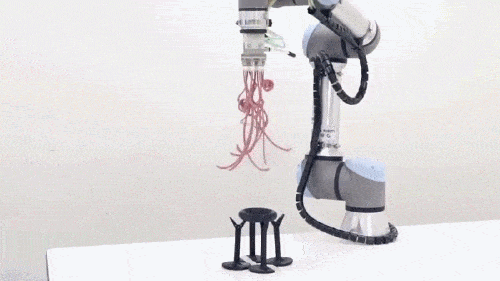
SAN value drops at a glance | Harvard Microrobotics Lab/Harvard SEAS
The tentacle gripper consists of a series of thin, hollow rubber tubes. After being inflated and pressurized, the rubber tube will automatically bend and wrap around various objects to realize the gripping function .
This design is simple and easy to use. It can handle objects of various shapes without complex feedback systems, and the force is gentle enough to not damage fragile items.
superbug
This year scientists discovered a new species of bacteria that is ridiculously large: it can even grow up to 2 centimeters long (yes, the unit is spelled correctly).
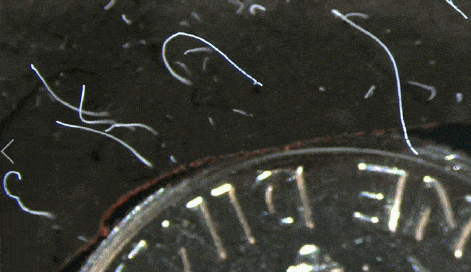
These “white threads” are newly discovered giant bacteria, so large that they are even visible to the naked eye (a coin is shown below the frame) | Tomas Tyml/Lawrence Berkeley
The bacteria, which the researchers named Thiomargarita magnifica , grow on mangrove leaf litter in the Caribbean. Various tests such as electron microscopy have confirmed that, except for the progeny separated from the top, these “filaments” with an average length of nearly one centimeter are a single cell as a whole[2].
AI playing football
AI may be good enough to generate text and pictures, but when they control the virtual villain into the green field, the scene still looks a bit sandy.
Video: AI Playing Football Demonstration | SIQI LIU et al.
This video is an AI training result published by DeepMind this year [3]. By imitating human athletes and performing “trial and error” exercises, the AI learned to play 2-on-2 skirmish football after 6 weeks . This is already a fairly complex motion control task for artificial intelligence, but it is still far from comparable to a real-world ball game.
goldfish drive
Goldfish are taking to the streets in small cars — and, it’s a scientific study.
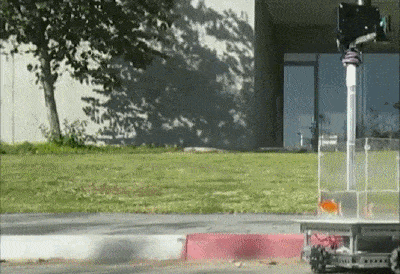
Goldfish can also be old drivers | Shachar Givon et al.
How do animals perceive space in completely unfamiliar environments? To answer this question, the researchers trained goldfish to drive “cars” with food rewards and let them explore terrestrial environments . There is a camera overlooking the fish tank on the top of the car, which can control the direction of the car by analyzing the position and direction of the goldfish. At the same time, there is a laser radar to prevent hitting the wall. After 7 days of training, 6 goldfish successfully mastered the task of driving, and were able to skillfully complete the task of reaching a specific target. The experimental results suggest that the spatial ability of animals is “universal” and not only applicable to their original living environment [4].
frog crash
Frogs are master jumpers, but these tiny little frogs called Brachycephalic toads are an exception . After they take off, they always lose control of their bodies, and even fall to the ground with their heads on the ground.
A collection of brachycephalus ( Brachycephalus genus) jumping and rolling over. Too bad I shouldn’t have laughed… | RICHARD L. ESSNERJR et al.
Originally, animals should sense balance through the fluid in the semicircular canals of the inner ear, but studies have shown that the inner ear structures of these mini frogs are too small for fluid to flow freely in them [5]. This affects their sense of space and balance, preventing them from landing accurately. Fortunately, these little frogs seldom jump, so they are less likely to be injured.
Spider Mechanic Claw
Grabbing with a gram tentacle might be outrageous enough, but this mechanical claw is the real outrageous king of the year: it’s actually made of dead spiders [6].
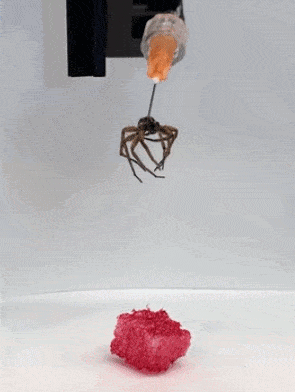
A spider would never have dreamed that it would become a claw machine for scientists after it dies… | Te Faye Yap et al.
Unlike humans, spiders use a hydraulic system to control the extension of their legs-and the researchers took advantage of this, using a syringe to push air to pressurize the spider’s legs. The “Dead Spider Mechanical Claw” can pick up various small objects with irregular shapes, and can bear up to 130% of its own weight.
The researchers named the dead spider “Necrobotics” (Necrobotics), and said it has the advantages of soft grip, biodegradability, and easy camouflage in natural environments (?).
flying beetle
The world’s tiniest beetles can take to the air with just a few hairs — and, they’re fast and good.
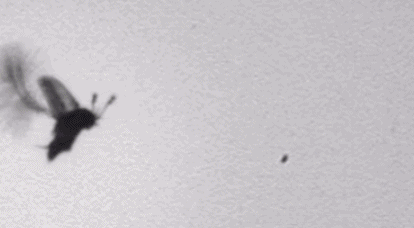
Admire the unique flying skills of the miniature beetle in slow motion | Sergey Farisenkov, Alexey Polilov
Here we’re looking at a tasseled beetle ( Paratuposa placetis ), and these little guys measure less than 0.4 millimeters long, making them one of the smallest non-parasitic insects.
Tiny insects are greatly affected by air resistance, but tassels can still fly fast, and research has found that this is due to their unique flapping movements and a pair of extraordinarily light hairy wings [7]. The wings work just as well as membrane wings at a small size, and are much lighter.
gaze into the abyss
Yes, this is a static image. But its dynamic effect is too good, so I want to share it here with everyone.

About to be sucked into a black hole! | Laeng, Nabil, and Kitaoka
It’s an optical illusion published this year by several researchers who dubbed it an “expanding hole.” According to the survey, about 86% of people will have the feeling of expanding the central area when seeing this static image, as if they are about to enter a dark cave [8].
The study found that this illusion map even causes visible changes in the human body- the pupils of the subjects staring at it dilate, as if they really entered a dark environment .
splash toilet
What happens if you flush the toilet without closing the lid? This video visually shows the aerosol particles that are quickly ejected from the toilet when flushing.
The aerosol particles sprayed out when the toilet is flushed. These tiny droplets are difficult to see with the naked eye. Here is the effect after being illuminated by laser | John Crimaldi
Toilet flushes have been known to produce aerosols in the past, and a recent study found that aerosol particles may be ejected faster than previously thought . These tiny droplets can travel at speeds of up to 2 m/s, and the tiniest of them remain suspended in the air for several minutes [9].
While the exact magnitude of the risk remains unclear, these tiny droplets do pose a risk of spreading pathogens. Therefore, it is better to close the lid when flushing.
Look at tattoos from another angle
How does tattoo ink get into the skin? This process may not be the same as your imagination.
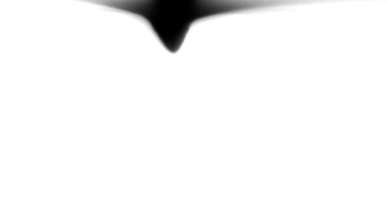
Slow motion view of tattoo needles piercing clear gel. These needles penetrate the skin up to 200 times per second, making them difficult to see with the naked eye | IDERA LAWAL/TEXAS TECH UNIVERSITY
This picture is a simulation experiment conducted by the researchers with the gel, which reproduces the process of tattoo needles penetrating the human body. The slow-motion playback shows that the tattoo needle is not responsible for injecting ink into the skin, it just makes a small hole in the skin with a depth of about 2 mm, and then as the needle retracts, the ink will automatically be “sucked” into the vacated small hole [10].
The researchers observed the working details of the tattoo needle in order to transform it into a new way of intradermal drug delivery—for example, it might be possible to use this method to inoculate certain vaccine preparations that are too viscous to be injected.
references
[1] https://ift.tt/92xb4lw
[2] https://ift.tt/q6hNHn8
[3] https://ift.tt/6GUSfp8
[4] https://ift.tt/183puvS
[5] https://ift.tt/DK915XW
[6] https://ift.tt/hqs5eGm
[7] https://ift.tt/wecWSlh
[8] https://ift.tt/n2mGlx1
[9] https://ift.tt/gvLOGd7
[10] https://ift.tt/Krv7Ou6
Author: Window Knock Rain
Edit: odette
Cover image credit: Jean-Marie Volland
This article comes from Guoke, and shall not be reproduced without authorization.
If necessary, please contact [email protected]

This article is transferred from: http://www.guokr.com/article/463156/
This site is only for collection, and the copyright belongs to the original author.